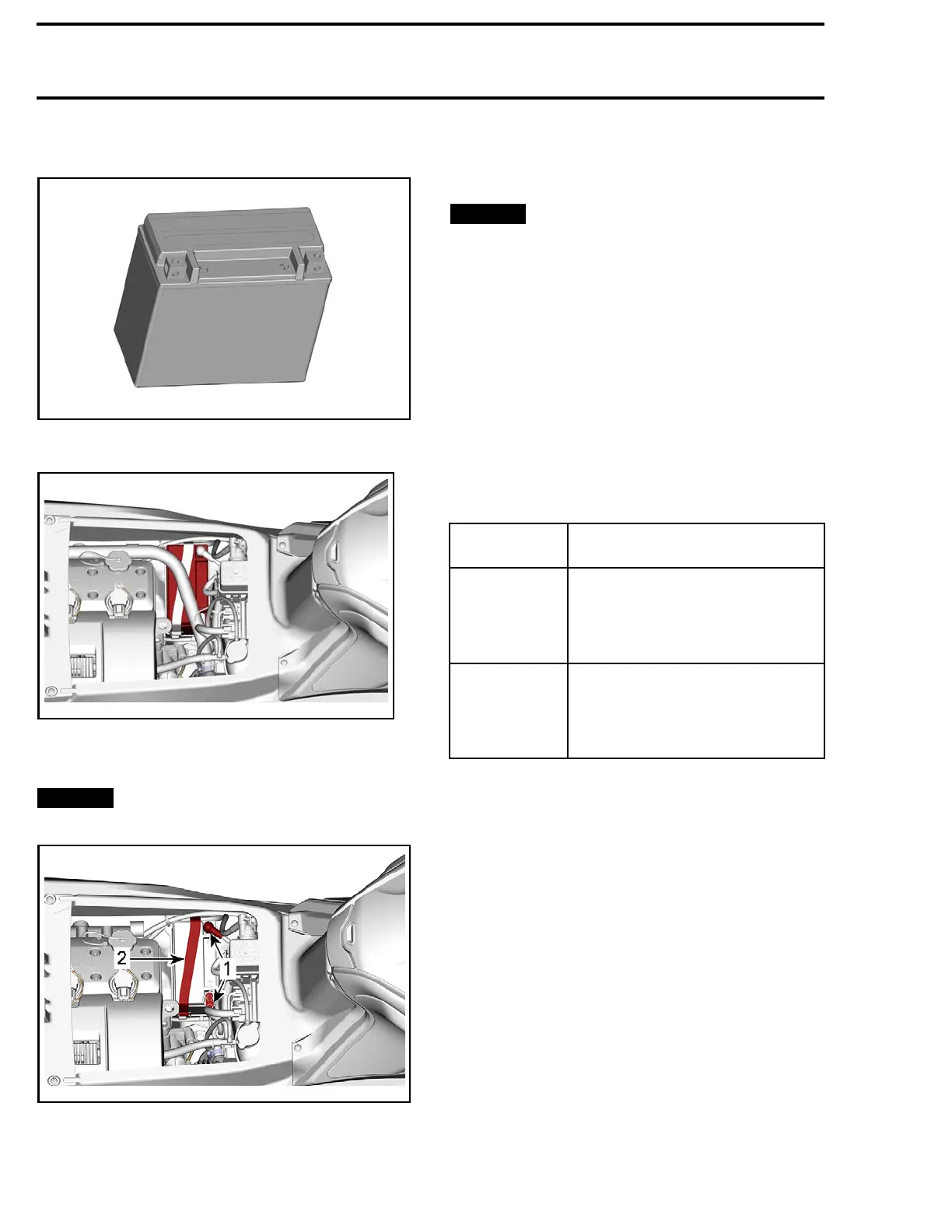Section 05 ELECTRICAL SYSTEM
Subsection 03 (CHARGING SYSTEM)
BATTERY
mmr2016-026-003
Battery Location
219100893-024-004
Removing the Battery
Disconnect battery posts and remove strap.
NOTICE
Always respect this order for re-
moval; disconnect BLACK cable first.
219100893-024-005_a
1. Battery post
2. Strap
Cleaning the Battery
Clean the battery casing, caps, cables and battery
posts using a solution of baking soda and water.
NOTICE
Do not allow cleaning solution to en-
ter battery.
Remove corrosion from battery cable terminals
and battery posts using a firm wire brush. Rinse
with clear water then dry w ell.
Inspecting the Battery
– Keep the top free of grime
– Check casing, cables, clamps, and case for ob-
vious damage or loose c onnections.
– Clean terminals and connectors as necessary
Refer to battery manufacturer guidelines.
Testing the Battery
There are 2 types of battery tests.
TEST
METHOD
COMMENT
Testing
voltage
(load appl
ied)
A dynamic vo
ltage test w ith a load
applied gives an accurate indication
of the condition of the battery.
This is the
most recommended
method.
Testing
voltage
(no load)
Astaticvo
ltage test is carried out
without discharging current. It is
the simplest and most commonly
used but t
he most likely to give
false results.
Testing Battery Voltage (Load Applied)
1. Connect
a battery load tester to battery.
2. Ensure proper test conditions:
–Initial
battery voltage above 12.5 Vdc
– Engine OFF
– Ambient temperature of 20°C (68°F)
3. Refer to load tester manufacturer for testing
procedure.
If batt
ery v oltage has dropped below specifica-
tion, t
he battery storage capacity has decreased
apprec
iably and the battery should be replaced.
Testing the Battery Voltage (No Load)
NOTE: Be aware that the voltage test can indi-
cate that the b attery is in good condition even
though the battery does not have enough stored
energy to crank the engine. A load test gives a
more accurate indication of the condition of the
battery.
126 219100963-013

